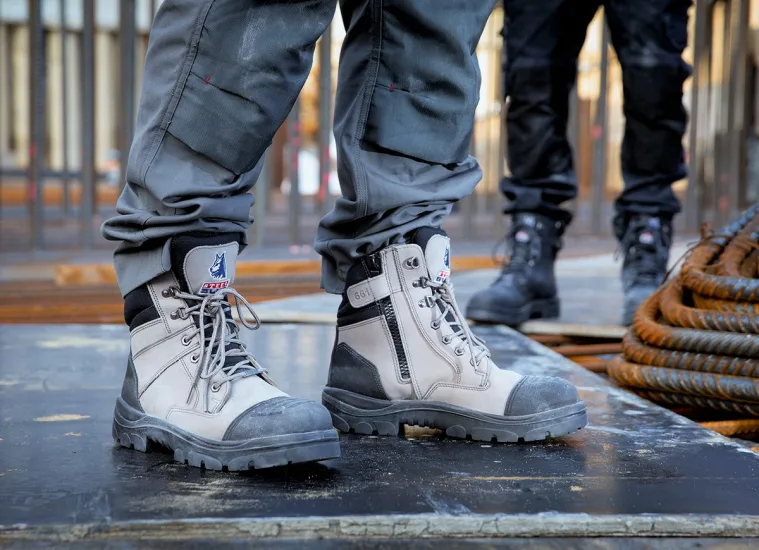Software Meets Steel-Toe Boots: Bridging Tech and Trade on Modern Sites

Tradition runs deep in construction. From the morning brew in the site canteen to the trusted routines of bricklayers, sparkies, and site managers, many aspects of the industry remain proudly hands-on. But beneath the surface of steel, concrete and grit, construction is quietly undergoing a digital revolution. Software, once the domain of architects and office-based project teams, is now as essential as the hi-vis vest or site boots.
Modern construction sites are no longer just about the workforce – they’re about smart power. From induction apps and Building Information Modelling (BIM) to IoT-enabled safety sensors, technology is bridging the long-standing divide between the site cabin and the toolshed.
Let’s take a closer look at how this digital and physical blend is changing the foundations of how we build.
The Digital Induction: Getting Safety Right From the Start
First impressions matter – especially on a construction site. Originally, the vast majority of site inductions were held in person by a site manager or HSE officer, often using paper forms, printed manuals, and verbal briefings. It was easy for things to get lost in translation or be missed entirely.
Today, digital induction platforms are being widely adopted across the UK and around the world. Workers can now complete site-specific training from their phone or laptop before even stepping onto the site. An online site induction can include:
- Health and safety protocols
- Hazard-specific training (e.g. working at height, in confined spaces)
- Site rules and layout briefings
- Emergency procedures
- Comprehension checks via quizzes or video walkthroughs
The advantage is clear: every worker receives the same information in an engaging, up-to-date format. And for site managers? There’s a digital trail showing exactly who has been inducted and when – a crucial asset for regulatory compliance and insurance.
As construction sites continue to scale in size and complexity, standardised digital inductions ensure that everyone, from the crane operator to the delivery driver, starts from the same safety baseline.
BIM: A Living Blueprint
If the construction sector had a digital backbone, it would be BIM – Building Information Modelling. At its core, BIM is about more than just 3d models; it’s about creating a shared, intelligent data environment for everyone involved in a construction project.
Traditionally, designs, structural information, and service layouts lived in separate documents. Miscommunication between the office and the site was common. But with BIM, everyone from designers to site workers can access a centralised model that shows:
- Design intent
- Structural details
- Mechanical and electrical layouts
- Scheduling (4D BIM)
- Cost estimation (5D BIM)
- Asset management data (6D and beyond)
For site teams, this means less guesswork and fewer errors. BIM-integrated mobile devices enable supervisors to visualise what lies behind a wall or beneath a floor slab, for example, before drilling begins.
A large-scale housing developer reduced on-site clashes by 40% in one UK project using BIM-based coordination. The integration saved weeks of delay and thousands in rework costs, proving that the investment pays off in both efficiency and bottom-line results.
IoT Sensors: Safety You Can See – and Sense
Incorporating Internet of Things (IoT) technology into construction may sound futuristic, but it’s already happening. IoT refers to connected devices and sensors that collect and transmit data in real-time. On a site, this can include:
- Wearable tech: Smart helmets or vests that monitor worker fatigue, motion, or even heart rate.
- Environmental sensors: Monitoring air quality, noise levels, temperature, or vibration.
- Plant monitoring: Alerts when machinery needs maintenance or is being operated outside of safe parameters.
- Proximity sensors: Triggering alarms when someone enters a restricted area or comes too close to moving equipment.
One of the most compelling uses of IoT is in fall detection. If a worker falls from a height and is unconscious, a smart wearable can automatically alert first responders with GPS location data – potentially saving lives.
Not only does this improve safety, but the data collected can also be used to analyse near misses, refine procedures, and adapt training materials.
Overcoming the Digital Divide on Site
Despite the clear advantages, not every site is racing to adopt new tech. The biggest barriers are often:
- Resistance to change: Some tradespeople remain sceptical of digital tools, seeing them as unnecessary or overcomplicated.
- Training gaps: Not all workers are confident using apps or digital platforms.
- Cost perception: Smaller firms worry about upfront investment, even if long-term benefits are proven.
To bridge this gap, forward-thinking companies are embedding digital literacy into their onboarding processes and offering ‘tech champions’ on-site – individuals trained to support others using new tools.
Importantly, successful adoption isn’t about replacing people – it’s about empowering them with better information, clearer communication, and safer systems.
The Future of Site Technology: What’s Next?
The convergence of tech and trade is only just beginning. Emerging innovations likely to influence future sites include:
- Augmented Reality (AR) headsets to overlay models onto real-world environments
- AI-driven analytics predicting risk hotspots before incidents occur
- Drones for surveying, site inspections and progress tracking
- Blockchain for secure, tamper-proof project records
Each of these tools offers the same promise: making smarter decisions, creating safer environments, and achieving stronger project outcomes.
Conclusion: Stronger Sites, Smarter Systems
The construction industry is often perceived as slow to modernise, but that’s rapidly changing. As the demand for smarter, safer, and more efficient projects grows, the divide between boots-on-the-ground and behind-the-screen is narrowing fast.
Site workers and tech tools are no longer in separate silos. Whether it’s an online induction completed before sunrise, a BIM model reviewed on a tablet at lunch, or a wearable sensor protecting someone on the scaffold, software and steel-toe boots are finally working in step.
And as that partnership deepens, it’s not just the structures that will rise higher, but the standards, too.

Source: Software Meets Steel-Toe Boots: Bridging Tech and Trade on Modern Sites




